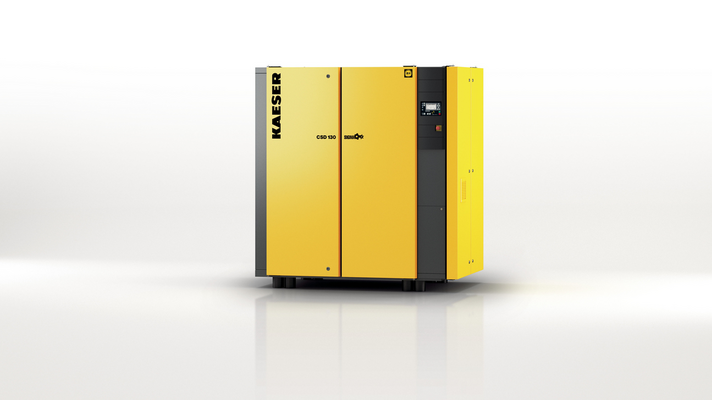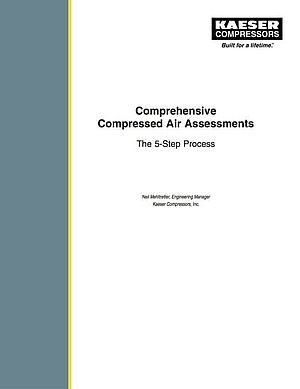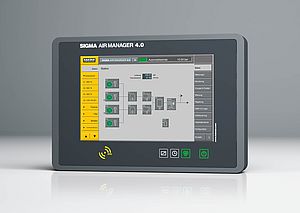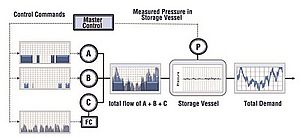Rotary screw compressors are the dependable backbone of an industrial compressed air supply. With a multitude of features, the innovative CSD/CSDX range from Kaeser Kompressoren fulfils this role more efficiently, dependably and economically, whilst at the same time reducing CO² footprint.
CSD and CSDX both available with variable speed control
The most important highlight of these compressors is their low energy consumption, which has been achieved via a number of innovative measures. The CSD/CSDX model series has drives of the best possible efficiency class, whether speed-controlled (IE5) or fixed-speed (IE4). The centrepiece of all compressors in this series is the rotary screw airend with flow-optimised “Sigma Profile” rotors, specially developed for this performance range. These and numerous other improvements, such as speed-controlled fan motors, have enabled the energy efficiency of the compressor system to be enhanced, which has significantly reduced energy consumption, resulting in reduced energy costs and an improved CO² footprint. What’s more, the new design has led to improved accessibility to all relevant components and therefore increased maintenance-friendliness.
Featuring motors with power from 45 to 110 kW, models from this series can cover delivery volumes from 8.4 to 19.4 m³/min and are designed for pressures up to 15 bar. Particularly at low pressures, even higher delivery volumes can be achieved.
Designed for optimised cost-efficiency, operational reliability and maintenance-friendliness
The environmentally friendly system design also extends to the fluid filter elements: they are metal-free and after use can simply be thermally disposed of without need of further treatment.
In addition to the standard versions, versions with an add-on refrigeration dryer module are available, which permit both compressed air generation and drying in a comparatively small space. The refrigeration dryer is dimensioned for high ambient temperatures and operates with very little pressure loss. In comparison to the previous version, energy consumption has been reduced significantly, whilst the required refrigerant charge is also around 25 percent lower. The dryer is accommodated in a separate housing and is therefore not negatively influenced thermally by the exhaust air from the compressor.




















